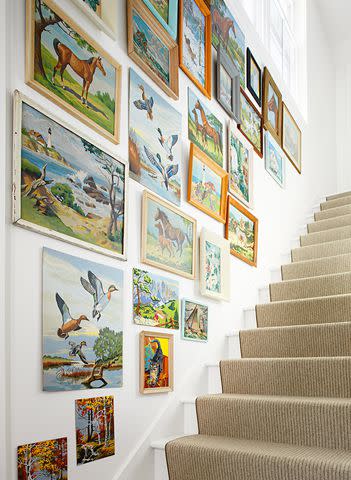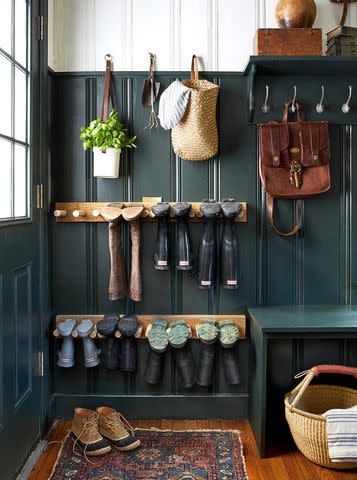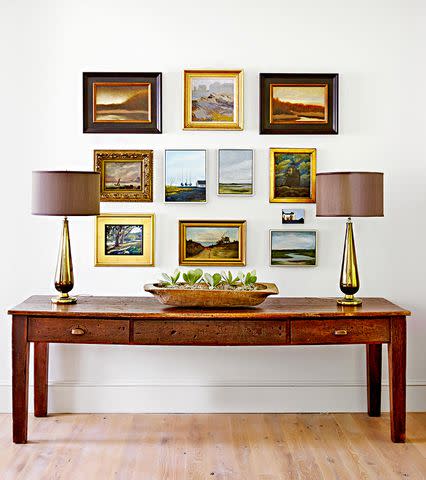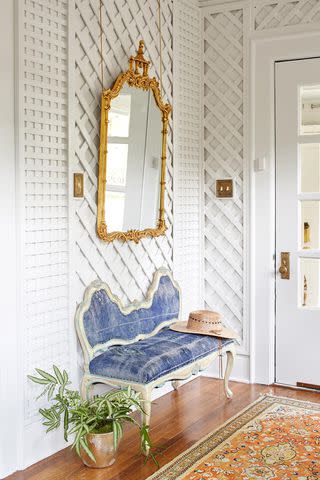Old Money Decor Is the Timeless Look Taking Over Interiors
Get all the details on the old money aesthetic, plus how to get the look without a trust fund.

There’s a fresh decorating trend on the scene, and it’s rich. We’re saying goodbye to the new and flashy and hello to a blast from the past that’s anything but boring. The old money aesthetic is taking the design and fashion worlds by storm, with no sign of letting up anytime soon.
“Eschewing the obviously flashy decor, trend-chasing, and interiors showmanship of the nouveau riche crowd, this style grounds itself in classically chic pieces with staying power,” says Heather Goerzen, Havenly design editor. “It’s Ralph Lauren Home meets Christie’s with a side of polo matches and Dom Perignon.” But with old money decor, it all comes down to the quiet luxury design tenets which, according to Goerzen, are craftsmanship, quality, and originality.
You’ll be able to spot the old money aesthetic almost instantly if you pay attention to what meets the eye—and then what’s below, above, and behind it.
“Old money homes and old money aesthetic are filled with layers of curiosities and objects of interest collected as hobby and testimony of a life well-traveled,” says Jordan Schehr, senior manager of interior design at One Kings Lane.
Over the past decade, the design world has been seeing a lot of white space: white walls, minimalist design, and even more open floorplans. With the old money aesthetic, no space is left untouched, and those little corners and crannies of traditional layouts are once more being celebrated—and decorated.
Jessica Lev of Jessica Lev Antiques in Houston, Texas, says this celebration of tastefully filled to the brim spaces is one of the hallmarks of grandmillenial style, a precursor of the old money design aesthetic. Plates, vintage art, and more can instantly transform once bare and overlooked spaces to create nooks that ooze with old money charm.

Why Old Money Decor Is Trending
Call it backlash against the open-concept living we have been doing for the past decade. Now, we want our homes layered with meaningful decor choices and cozy landing spots.
Lev says we’re craving a return to the familiar and almost nostalgic decor we knew in years past as we gravitate toward more traditional rooms. For those who have fallen prey to swapping out their decor as the trends come and go, this return to a style of yesteryear can’t come soon enough.
“Rather than constantly reinventing your space, there’s something very appealing about a timeless look that has always represented chic taste and lasting style,” Goerzen says. “I think everyone is getting a little tired of chasing the ‘here today, gone tomorrow’ trends.”
:
Key Characteristics of Old-Money Decor

Color
Think blues in historic tones, burgundies, blushes, and deep greens, Goerzen says. “Old money color schemes are layered and multi-dimensional, but always balanced with plenty of warm neutrals or timeless black and whites to give the space breathing room,” she notes.
Pattern
You guessed it: Florals, botanicals, stripes, and plaids rule the roost when it comes to old money style. Goerzen recommends adding a bit of animal print or hide for a hint of edge. No matter which patterns you call on, Goerzen advises balancing with solids so the result looks well thought out.

Antiques and Collections
Antiques are a must for nailing this look. Lev suggests starting small with antique books and boxes. “They’re portable and versatile, and it is a good way to ‘try out’ how you feel about antiques before making larger investments,” she says. Once you’ve gained your antique footing, she suggests next investing in a commode or chest: “They can literally go anywhere, from a statement piece in an entry or formal room to a bedside table in a bedroom.”
Goerzen recommends scouring thrift stores and antique shops for a wealth of second-hand options. “Even if you don’t have a vast estate filled with family heirlooms, you can certainly create the look of a space that’s been collected over time with these well-loved artifacts (and on a budget!),” she says.
And remember, you don’t need to buy everything at once. Take a cue from Lev and ask for special pieces when birthdays and anniversaries roll around.
Texture
Just as important as layering color, pattern, and objects is the balance of texture. “Incorporate elements with brass, crystal, mirrors, marble, and rich, dark woods,” Goerzen says. “It doesn’t have to cost a fortune, it just needs to look a little more varnished and have some history.”

How to Decorate with the Old Money Aesthetic
When it comes to establishing an old money feel in your home, Lev says there’s a simple action plan: “Curate, curate, curate.”
There should be thought and meaning behind it all. “Every layer, accessory, or piece of furniture should have a purpose that adds to the overall aesthetic or function of a room,” Lev says. But most importantly, it’s important to have a connection to your collections—meaning they’re pieces you love.
To keep the aesthetic from feeling too busy or choppy, Lev says it’s important to pay attention to room-to-room transitions as well as be mindful of color schemes. It should feel cohesive and flow from one room to another. One way Lev accomplishes that in her own home is through utilizing her collections.
“I collect antique boxes and Chinese porcelain,” she says. “I think having both throughout my house creates a flow that ties rooms together.”
For those who are just dabbling in this layered approach to decor for the first time, determining the right cadence might be a trial-and-error exercise.
“[It’s about] balancing ornate chandeliers with streamlined pieces, statement wallpaper with classic art, head-turning marble with understated, polished woods,” Goerzen says. “There’s freedom to go bold in certain areas, while simultaneously exercising restraint in others.”
Knowing how and when to pump the brakes or charge ahead are oftentimes best left to the eye, though there’s certainly room for play. From finishes to fabrics, textures and tones, weaving pieces throughout your home will create a fresh and exciting feel, says Schehr. “If you approach it with patience and attention to detail, you can build an aesthetic that is not only on trend, but timeless for years to come,” she says.
:
false

